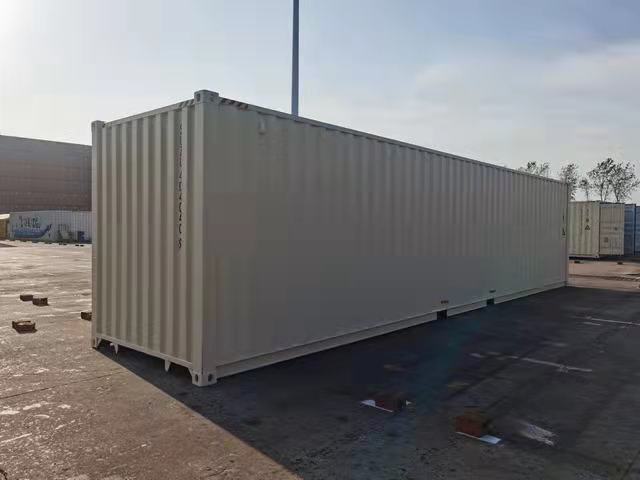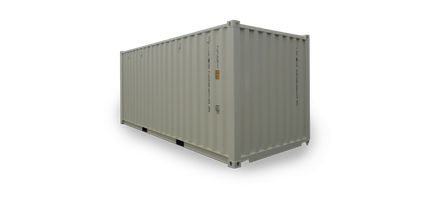The Ultimate Overview to Selecting the Right Delivery Container for Your Requirements
When it pertains to choosing the ideal delivery container, understanding your particular needs is necessary. You'll desire to take into account variables like dimension, type, and material to ensure you make the most effective choice. From common dimensions to specialized alternatives, there's a lot to check out. And also, budgeting for both the container and any type of modifications can make a big difference. Allow's break down the crucial facets to aid you discover the best fit for your requirements.
Understanding Shipping Container Sizes
When you're picking a shipping container, recognizing the numerous dimensions offered is essential for making the appropriate choice. Delivering containers normally come in common sizes of 20 and 40 feet, yet you'll also discover other measurements. Understanding the size you need depends upon what you plan to store or transport.If you're moving smaller things, a 20-foot container may be optimal, while bigger shipments typically require a 40-foot container. Keep in mind that the height can additionally differ; high dice containers provide added upright space, which can be helpful for taller goods - Shop New Shipping Container 40' x 8' x 9’6".Before making a decision, measure your freight, and consider just how much space you'll need for packing and dumping. Always variable in possible future requirements-- opting for a somewhat larger container might save you problem down the line. Eventually, picking the right size will certainly improve effectiveness and assure your things are protected throughout transportation
Kinds of Shipping Containers Available
There are several kinds of delivery containers available, each made for certain purposes and cargo demands. The common completely dry container is versatile, best for general freight. If you're delivering perishable items, consider a chilled container, which preserves a regulated temperature. For large things, high dice containers supply additional elevation, accommodating taller loads.If you need to deliver hefty equipment or devices, level rack containers supply a strong base without wall surfaces. Open-top containers permit for very easy loading of high freight, with a detachable tarp covering for protection. If you're looking for adaptability, consider a collapsible container that can be easily kept when not in use.Lastly, specialized containers like storage tank containers are made use of for liquids, while vented containers are created for bulk cargo that requires ventilation. Knowing your cargo type will certainly help you pick the best container to satisfy your delivery needs successfully.
Material Considerations for Longevity
When selecting a shipping container, the product plays a crucial function in its longevity. You'll desire to weigh the advantages of steel versus aluminum, specifically pertaining to rust resistance. Comprehending these variables can help you make a more enlightened selection for your delivery requires.
Steel vs. Light weight aluminum Containers
How do you pick in between steel and light weight aluminum containers for your shipping requires? Start by thinking about longevity. Steel containers are durable and deal superb strength, making them optimal for heavy lots and severe problems. They stand up to damage from influences and are usually less costly, which can be a major variable for budget-conscious buyers.On the other hand, aluminum containers are lightweight, which can save you on shipping costs. They're much easier to maneuver and are a terrific choice if you require to deliver goods often. Aluminum is usually more costly and much less durable than steel. Weigh your specific demands very carefully, consisting of weight, expense, and the kind of cargo you'll be delivery, to make the best selection for your circumstance.
Corrosion Resistance Variables
Picking the best material does not just entail weight and cost; deterioration resistance plays a substantial role in durability. When selecting a delivery container, take into consideration the atmosphere it'll deal with. Steel containers, while strong, can rust otherwise correctly treated. Look for alternatives with safety coverings or galvanization to enhance their life-span. Light weight aluminum, on the various other hand, provides natural deterioration resistance, making it optimal for coastal locations or damp conditions. It can be a lot more expensive. Additionally, evaluate the container's usage-- if it'll be revealed to chemicals or harsh weather condition, prioritize materials that can hold up against these problems. Purchasing a corrosion-resistant container currently can conserve you from costly fixings or substitutes down the line. Pick wisely for long-term benefits.
Adjustments and Customization Options
Delivering containers aren't simply for transporting goods; they can be changed to meet your certain needs via various modifications and modification options. You can convert a basic container into a relaxing workplace, a temporary retail store, or perhaps an individual gym. The possibilities are almost endless.Think concerning including windows, insulation, or ventilation to boost comfort. You might likewise consider electrical wiring, pipes, and even personalized shelving to boost functionality. If safety and security's an issue, strengthened locks can provide tranquility of mind.For aesthetic allure, you can paint the container or include an one-of-a-kind style to make it stick out. Do not neglect concerning floor covering choices-- whether you desire long lasting plywood or something a lot more advanced, it can raise the space.Ultimately, customizing your shipping container to match your requirements can improve usability and develop a special setting that shows your design.
Evaluating Your Transport Needs
When it pertains to using your customized shipping container, comprehending your transportation needs is vital. Beginning by establishing what you'll be delivery-- whether it's heavy equipment, retail products, or individual products. Each kind of cargo has various requirements pertaining to dimension, weight, and accessibility.Next, consider the range and mode of transportation. Are you shipping locally, nationally, or worldwide? This impacts the container's layout and performance. If you're utilizing vehicles, ensure your container fits standard measurements for very easy loading and unloading.Additionally, consider transportation problems. Will your things need unique defense from weather condition or temperature level changes? If so, you may need insulation or ventilation features in your container.Lastly, assess just how often you'll be delivering items. Frequent shipments might need a much more sturdy and versatile container to meet continuous needs. By resolving these factors, you'll be well-prepared to select the best delivery container for your demands.
Budgeting for Your Delivery Container
Establishing an allocate your shipping container is necessary for making sure a smooth investing in process. Figure out just how much you can pay for to invest. Costs can differ significantly based on dimension, condition, and kind. New containers normally cost more, but utilized ones can offer significant savings.Next, take into consideration any kind of additional prices you could incur, such as transport fees, shipment costs, and adjustments. If you plan to customize the container, consider those costs This Site as well. Research study various distributors to compare costs and locate the ideal deal that satisfies your needs.Don' t fail to remember to include any kind of permits or regulations that may apply to your acquisition and use of the container. By plainly describing your spending plan, you'll be better prepared to make enlightened decisions, ensuring you obtain the best container without damaging the financial institution.
Maintenance and Treatment for Durability
To assure your shipping container lasts for many years, routine upkeep is key. Start by inspecting the outside for corrosion, dents, and damage. If you spot any type of issues, address them instantly to avoid further damage. Clean the container periodically, both throughout, to eliminate dust, debris, and wetness that can cause corrosion.Ensure the doors secure properly and lubricate the hinges to avoid corrosion and sticking. If you're using the container for storage, consider including air flow to decrease moisture and mold and mildew growth. For added security, use a rust-inhibiting paint or sealer annually.If your container's situated in an extreme setting, like seaside locations, you could need to enhance maintenance regularity. Keep an eye on the floor covering, too; any type of indicators of wear need to be fixed immediately. With these basic actions, you'll prolong the life of your shipping container significantly.
Often Asked Questions
Just how Do I Locate a Reliable Delivery Container Provider?
To find a reputable delivery container distributor, start by investigating on the internet evaluations, requesting referrals from close friends or market calls, and contrasting costs. Always inspect their qualifications and warranty they use high quality containers that fulfill your requirements.

Can I Rental Fee a Shipping Container Rather Than Buying?
Yes, you can definitely lease a delivery container rather than getting one. Numerous vendors supply rental alternatives, which can conserve you money and supply flexibility if you just need it for a brief duration.
What Allows Are Required for Container Placement?

Are Shipping Containers Weatherproof and Ideal for Outdoor Storage Space?
Yes, delivering containers are typically weatherproof, made to hold up against severe problems. Their robust building and construction keeps your products secure and dry, making them appropriate original site for exterior storage. Just guarantee appropriate air flow to avoid moisture accumulation inside.
Just how Do I Carry a Shipping Container When Bought?
